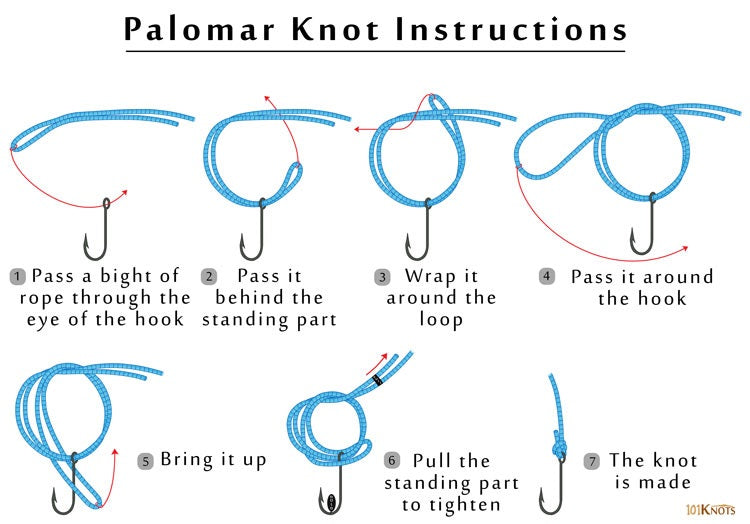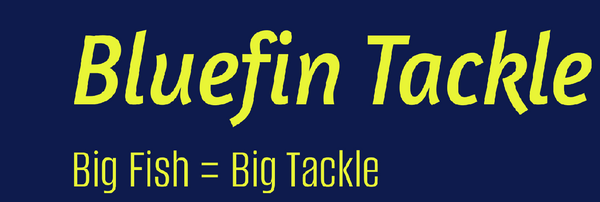
Best Fishing Knots for Braided Fishing Line
Share
Best Fishing Knots for Braided Fishing Line
Braided fishing line is known for its strength, sensitivity, and durability. However, due to its slick, non-stretch properties, tying strong and reliable knots is essential. Traditional knots that work well with monofilament or fluorocarbon lines may not be as effective with braided lines. Below is a detailed guide on the best fishing knots for braided fishing line, how to tie them, and their best uses.
1. Palomar Knot
Best Use: Tying hooks, lures, and swivels
The Palomar knot is one of the strongest knots for braided fishing line. It maintains nearly 100% of the line’s strength and is simple to tie.
How to Tie the Palomar Knot:
- Double about 6 inches of the braid and pass it through the eye of the hook or lure.
- Tie a simple overhand knot with the doubled line, creating a loose loop.
- Pass the hook or lure through the loop.
- Moisten the knot and pull both ends of the line to tighten it down securely.
- Trim the excess tag end.
2. Improved Clinch Knot (Modified for Braid)
Best Use: Attaching hooks and lures
The traditional clinch knot does not hold well with braided line due to its slick surface. Modifying it with extra turns makes it more secure.
How to Tie the Improved Clinch Knot:
- Pass the braid through the eye of the hook and make 6-8 wraps around the mainline.
- Pass the tag end through the small loop near the eye of the hook.
- Then, pass it back through the larger loop created.
- Moisten and tighten by pulling both ends firmly.
- Trim the tag end.
3. Double Uni Knot
Best Use: Joining braided line to monofilament or fluorocarbon leader
The Double Uni Knot is a strong and reliable knot for connecting two lines of different materials and diameters.
How to Tie the Double Uni Knot:
- Overlap the ends of both lines.
- Take the braid and create a loop, wrapping it around both lines 6-8 times.
- Pull the tag end to tighten the first Uni Knot.
- Repeat the process with the mono or fluorocarbon line, wrapping it 4-6 times.
- Pull both main lines to slide the knots together.
- Trim the tag ends.
4. FG Knot
Best Use: Connecting braided line to a fluorocarbon or monofilament leader
The FG Knot is one of the strongest knots for attaching braid to a leader, offering excellent strength and low profile for smooth casting.
How to Tie the FG Knot:
- Hold the leader tight and wrap the braid around it in alternating wraps (around 15-20 times).
- Lock the wraps with two half hitches using the braid.
- Moisten and tighten by pulling the leader and braid in opposite directions.
- Finish with additional half hitches and trim excess line.
5. Albright Knot
Best Use: Connecting braided line to heavier monofilament or fluorocarbon leader
The Albright Knot is effective for joining different types of fishing lines.
How to Tie the Albright Knot:
- Make a loop in the heavier leader line.
- Pass the braid through the loop and wrap it around itself and the leader 10-15 times.
- Pass the braid back through the loop in the same direction it entered.
- Moisten and tighten by pulling both ends.
- Trim excess line.
6. Loop Knot (Non-Slip Loop Knot)
Best Use: Allowing lures to move freely
A loop knot is great for tying lures or jigs, giving them more natural movement in the water.
How to Tie the Loop Knot:
- Make an overhand knot in the braid, leaving a tag end.
- Pass the tag end through the lure’s eye.
- Wrap the tag end around the mainline 4-6 times.
- Pass the tag end back through the original overhand knot.
- Moisten and tighten the knot.
- Trim the excess.
7. Snell Knot
Best Use: Tying hooks for better hook-setting power
The Snell Knot is ideal for rigging hooks, especially when using circle hooks for catfish or other large fish.
How to Tie the Snell Knot:
- Pass the braid through the eye of the hook, forming a loop.
- Wrap the tag end around the shank of the hook 7-10 times.
- Pass the tag end back through the loop.
- Moisten and pull tight.
- Trim the excess line.
8. San Diego Jam Knot
Best Use: Tying on heavy lures and hooks
The San Diego Jam Knot is extremely strong and is excellent for braided lines in saltwater fishing.
How to Tie the San Diego Jam Knot:
- Pass the braid through the eye of the hook and double it back.
- Wrap the tag end around both lines 6-8 times.
- Pass the tag end back through the bottom loop near the hook.
- Moisten and pull both ends tight.
- Trim excess line.
9. Bimini Twist
Best Use: Creating a double line for offshore fishing
The Bimini Twist is used to create a doubled-up leader, which is helpful for big game fishing.
How to Tie the Bimini Twist:
- Form a loop with the braid and twist it around itself 20-30 times.
- Hold the loop and begin tightening slowly.
- Secure with multiple half hitches.
- Moisten and pull tight.
- Trim excess line.
Conclusion
Braided fishing line offers superior strength and sensitivity, but tying the right knots is crucial to maintaining performance and reliability. Whether you’re tying on a lure, connecting a leader, or making a loop knot, the right choice of knot can make a significant difference in your fishing success. Practice these knots regularly, and always moisten the line before tightening to prevent friction and heat damage. Happy fishing!
